
If the UK has a housing crisis, London is its beating heart.
House prices in the capital have risen 57% in the last five years, while average weekly earnings across the city have fallen in the same period.
At the current rate of growth, a single person would have to save for 29 years to raise a deposit to buy a home at the current average London price of £534,000.
PwC predicts that by 2025, just 40% of Londoners will own their own homes, compared with 60% in 2000.
And this is happening while the city's skyline is full of cranes. Work started on 30,000 privately-developed new homes last year and Estates Gazette estimates that 7,000 of these will be in towers at least 20 storeys tall.
Many new developments are marketed as "luxury" flats and have their own glossy brochures, advertising a list of perks and amenities you'd normally associate with swanky hotels such as rooftop bars, gyms, and private cinemas. They commonly sell for well above the average London house price, even for a one-bed flat or a studio.
Local authorities still require between 30% and 40% of homes in any new development to be classed as "affordable", including blocks of multimillion-pound apartments. Normally, this means they are available to rent at 80% of the market rate, or available to buy through shared ownership schemes.
But developers tend to argue that they can't meet those targets because it would make their housing schemes unprofitable. Land in London, they argue, is too expensive to offer homes at a discount.
Developers often commission "viability assessments" from third-party surveyors that conclude that housing schemes won't go ahead if they meet the local affordability target. To persuade council planning officers, developers then tend to offer a raft of other incentives, instead of affordable housing, using section 106 of the Town and Country Planning Act.
These can include huge investments in the local area and transport infrastructure, and contributions towards local employment and training schemes. Some developers simply offer to pay millions of pounds towards the local authority's affordable housing budget. Some do both.
New London mayor Sadiq Khan made the housing crisis his number-one priority during his campaign and has committed to building 50,000 new homes a year, while also ensuring that 50% of all new homes in London are "genuinely affordable". He has a fight on his hands to persuade the construction industry to play along.
Below we have detailed six property schemes that were approved with less than the locally agreed affordable housing to show how London's property market finds creative ways to get around regulations designed to help ordinary Londoners find a place to live.
1.

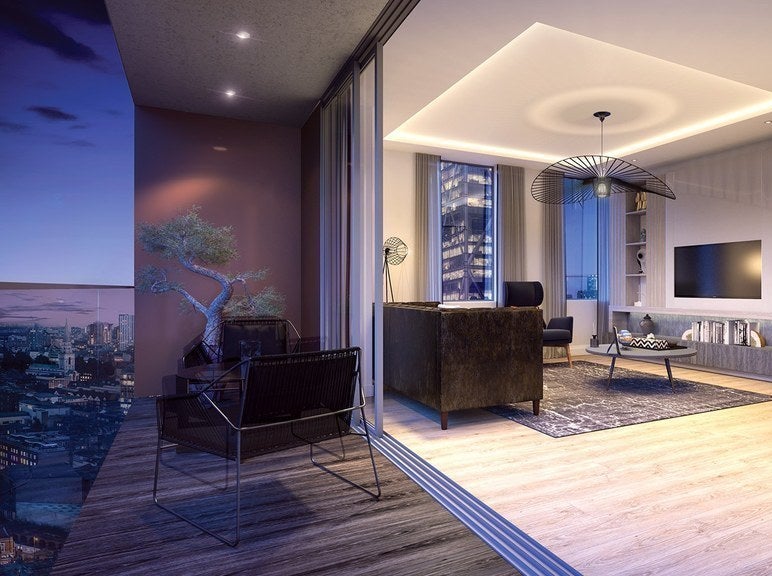
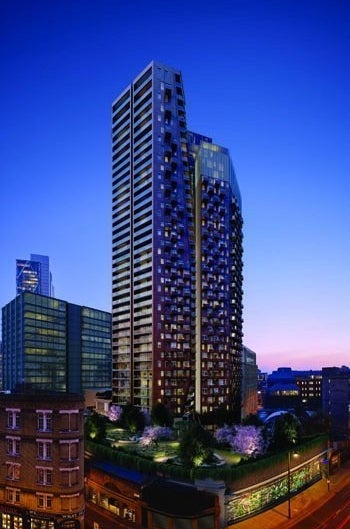
The price: Starting at £695,000 for a studio flat, rising to more than £2.5 million for a three-bed apartment. Since they went on the market last month 80 homes have been sold, worth a total of £60 million. Building starts at the end of the year with completion due in the first quarter of 2019.
The blurb: David Galman, sales director of Galliard Homes, says in the press release: "The regeneration of this Shakespearean site will elevate the status of Shoreditch to that of the uber-cool Meatpacking district in downtown New York City."
The amenities: Luxury health club; 32nd-floor sky bar and terrace; 24-hour concierge offering housekeeping and dry-cleaning; private 20-seat screening room; games and recreation lounge; IT business suites and boardroom; and "programmable mood lighting" in all rooms.
The developers: It's a joint venture between Galliard, Cain Hoy, McCourt, Vanke, and the Estate Office Shoreditch.

Any affordable housing? There's none on site.
Why? Hackney council normally insists on 35% affordable housing in new developments.
The developers, however, said this was unviable and instead paid £3 million towards affordable housing elsewhere in the borough. That money will go towards 40 homes, which will be built by the Family Mosaic housing association.
The council was impressed that – at a cost of about £20 million – the developers are preserving the remains of the ancient Curtain Road theatre, which was discovered on the site in 2012, as well as creating a large new public space, with shops, offices, and a visitor centre.
There is also a £3.1 million contribution to Crossrail and payments worth about £1 million towards improving the surrounding environment.
Fun fact: The Curtain Road theatre is thought to be where Shakespeare debuted several plays, including Romeo and Juliet.
2.

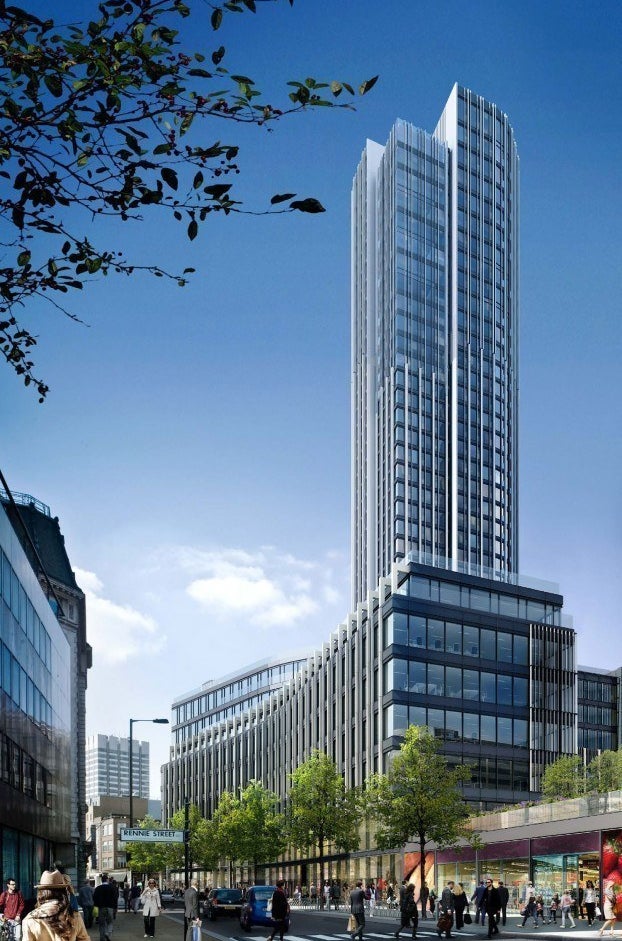

The price: Two-bed flats start at £2.45 million, three-beds start at £2.67 million. Prices go up way past £10 million for a penthouse.
The pitch: "South Bank Tower is a majestic architectural statement, built in the Modernist tradition of clean lines, unadorned finishes and light-flooded rooms... the South Bank is arguably the world's most exhilarating artistic neighbourhood."
The amenities: Residents' lounge; private roof garden with views across the City; business suite and lounge; 20-metre swimming pool with sauna and steam room and private gym; secure basement car park; residential services team, "available 24/7/365", who can get you "tickets to the Wimbledon final, out of hours personal shopping at Harrods or last-minute flights for a well-deserved vacation".

Affordable housing? None on site.
Why? CIT Group, the company behind London's City Hall, instead gave £22.6 million to the borough's Affordable Housing Fund, so it can build 89 affordable homes elsewhere in the borough of Southwark.
The developers originally offered £4 million but this was rejected.
They said it would impractical to put affordable housing in the tower, partly because it's a converted office block and it would be difficult to create a separate entrance and lift for the affordable housing tenants – normally a prerequisite for affordable housing blocks.
Plus anyone in social housing units in the tower would still have to pay the service charges of £70 a week for a two-bed flat, which is three times the central London average.
Fun fact: This used to be called King's Reach Tower and for a long time was the home of magazine publisher IPC Media, which owns NME and Country Life.
3.



The price: The prices are only available on request but a one-bed flat is currently for sale for £2.1 million.
There are in fact two towers – River and City, with a hotel adjoining them – and construction is scheduled to finish in the second half of 2019.
The blurb: "Introducing a brand new level of luxury, River Tower at One Nine Elms presents the first residential tower in London to be fully serviced by a world-class, five-star hotel, where the spectacular views are matched only by the spectacular service. Superbly appointed next to the iconic River Thames, these premium private residences will be finished to an exceptional specification."
The amenities: The hotel is run by the Chinese Wanda group and its services will be available to River Tower residents – so if you live there, you'll get:
* Five-star 24-hour concierge and butler services
* Maid and "turndown service" (This is where someone folds your bedsheets so it's easier to get into bed.)
* In-home massages
* "Stress-free valet parking"
* Exclusive residents' lounge on the 19th floor
* Swimming pool, fitness centre, and spa
People living in City Tower will have to make do with a cinema, crèche, residents' lounge, gym, and roof terrace.

Affordable housing? Of the 491 total homes across two towers, 52 will be available to buy via shared ownership schemes. (This counts as affordable housing as far as the law is concerned.)
But that's just 10.4% of the total and well short of Wandsworth's target of 33.3% for new developments.
So the developers are paying £6.8 million towards affordable housing in the area and £10.2 million towards the creation of two new Northern line tube stations nearby, and £4 million towards Crossrail, the gargantuan east-to-west rail project.
And there will be a viewing platform at the top of the tallest tower that will be open to the public, plus the council liked the offer of new pedestrian walkways between Vauxhall and the Thames.
The scheme attracted controversy by reducing the amount of promised office space and increasing the size of its hotel. Polly Freeman, of the Friends of Vauxhall group, told the BBC: "The jobs will not be luxury will they? They will be cleaners, janitors, and security staff which will not provide quality careers for local people which we were promised when this development came forward."
Fun fact: At 200 metres City Tower will be one of UK's tallest residential buildings. Only the Shard will have higher homes.
4.

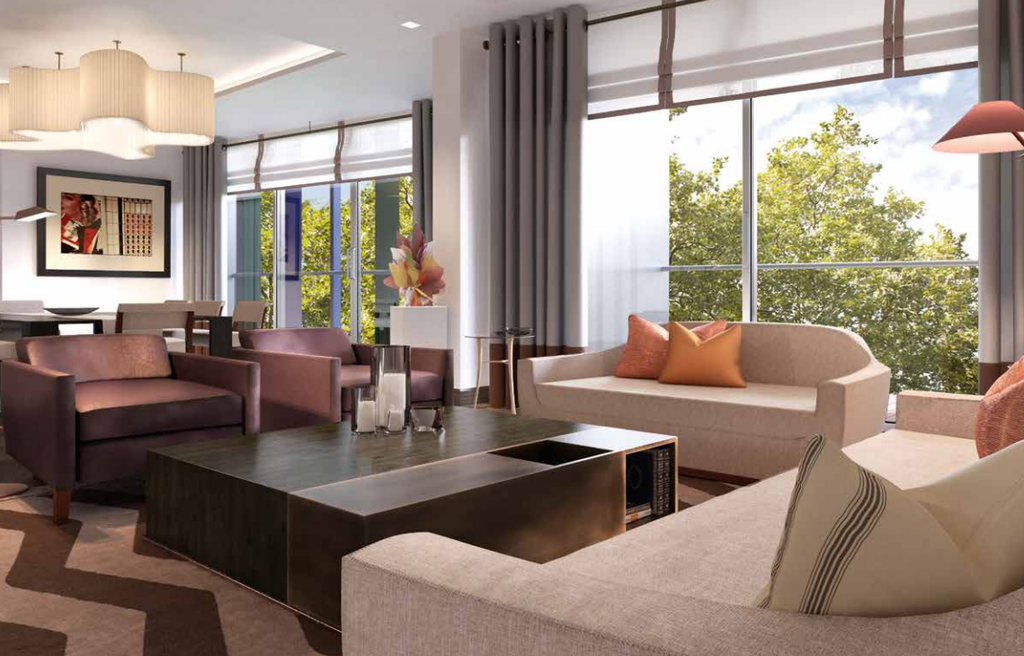
The price: These went on sale last year and of the homes that are still available, it's £3.8 million for a two-bed apartment or £7.7 million for a three-bed. One of the penthouses was reported to have been sold for £25 million.
The blurb: "A development that will quite simply redefine envy."
Amenities: It depends what kind of apartment you get, but the options include: A gallery, featuring work by David Bailey; in-wall TVs in every master bedroom and some shower/bathrooms; rooms with "programmable mood / scene settings"; a 990-square-foot residents' gym; private spa and steam room; private cinema room; wine cellars with temperature and humidity control; 24-hour concierge; and each home comes with an original framed photograph of Marylebone by David Bailey, worth around £20,000.


Affordable housing: There are 44 luxury flats and a separate block of 16 affordable homes. That means 36% of the total are affordable, which is more than many developments, but still shy of Westminster's 50% target for developments with more than 25 homes.
The developers also paid £4.1 million to Westminster's affordable housing fund, which is less than half of the £8.7 million that would be required for such a scheme under the council's housing strategy.
But as Westminster's planning report says: "The applicants contend that, given the cost of the development and the associated planning obligations ... any increased payment would render the scheme unviable."
There's also a £291,00 contribution towards the council's education budget and various other payments towards improving the local area.
The developers argued that the cost of the building and the planning regulations meant that paying any more to the council would make the scheme "unviable".
Fun fact: The master bedroom in the penthouse flat is 200 square feet – about the same as an average-sized one-bed flat.
5.

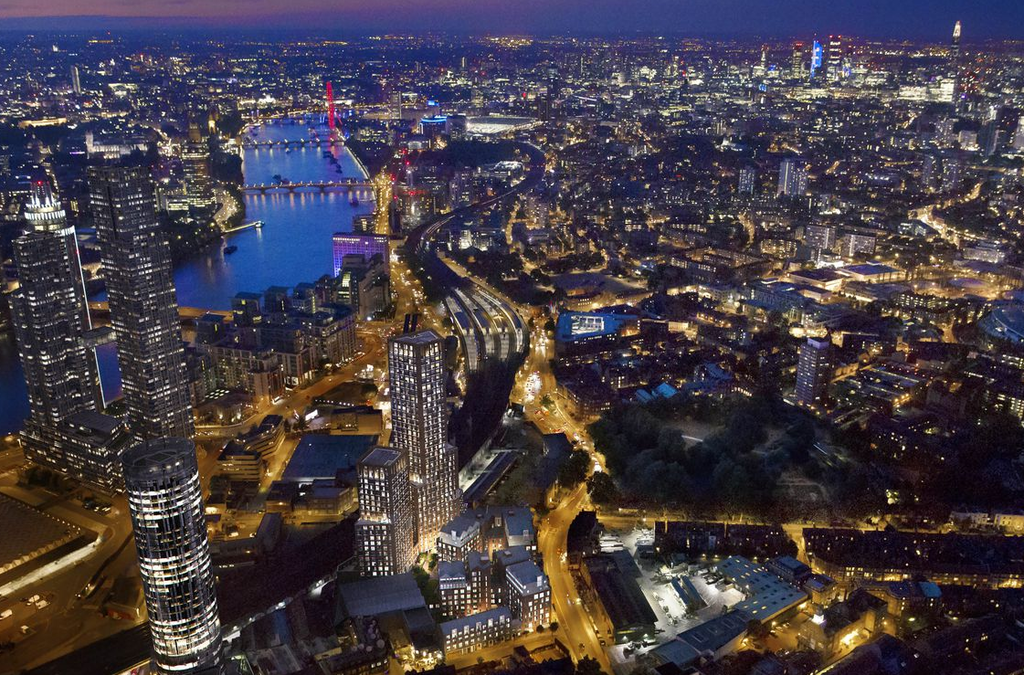
The price: From £645,000 for a studio flat, rising to £2.45 million for a three-bed. These flats went on sale last year and will be completed in 2017.
The blurb: "Ready to live the height of luxury?"
The amenities: Private gardens; 24-hour concierge; spa, sauna, and swimming pool; private residents' lounge; choice of three interior design schemes.

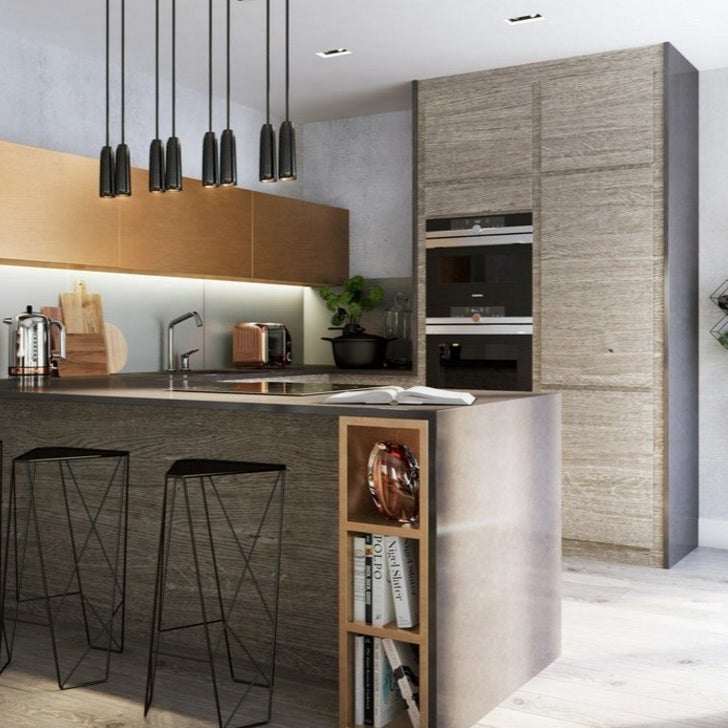
Affordable housing: Out of 415 homes, just 19 are classed as affordable, representing 4.5% of the total. This is an improved offer – the developers originally said they could only built 10.
The council said the 19 "affordable" flats are "high-quality family homes".
Lambeth council normally insists on a 40% affordable target, but in this case agreed to reduce this obligation because the developers offered to build a new primary school next to the flats.
The council said that the value of the land would be worth 66 affordable homes, or 16% of the scheme's target, taking the total to 22%.
The developers, Mount Anvil and Fabrica, and the landowner, BT, are also paying £6.3 million towards local infrastructure improvements and building a new 4,000-square-metre public space.
Fun fact: Formerly a BT telephone exchange, at 39 storeys this will be the tallest brick residential tower in the country.
6.

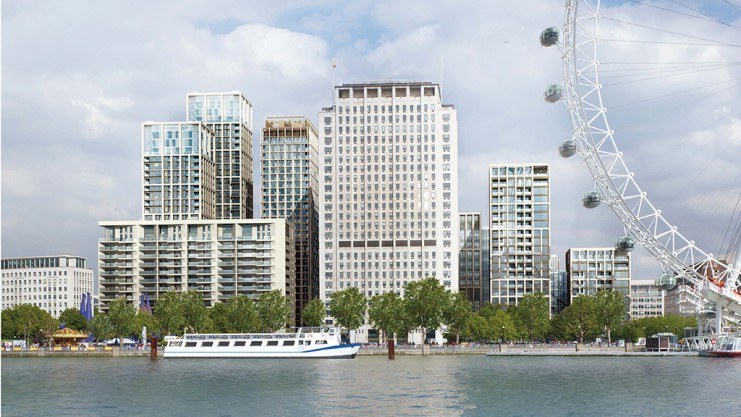
What is it? A £1.2 billion cluster of seven new residential and business buildings on the south bank of the Thames near Waterloo, centred on the old Shell building, which was the headquarters of the oil company since it was built in 1954. Construction on the £1 billion project started in April and won't be finished until 2019.
The price: When they went on sale in September 2015, studio flats in one of the buildings – One York Square – were available from £540,000 and two-bed flats from upwards of £1 million. You can currently get a one-bed flat in the Casson Square building for about £750,000.
The blurb: "This location is an exciting opportunity to shape a vibrant new quarter; one that responds to its context and neighbouring developments to create a world-class place to visit, work and live."
Amenities: A 24/7 concierge whose jobs range from "receiving deliveries and greeting visitors to booking restaurants and delivering food and gifts"; a residents-only fitness club with infinity pool; and the development will have restaurants and bars as well as "speciality delicatessens, convenience retail stores, leisure, health and beauty [stores]".
The developers: It's from Braeburn Estates, which is a joint venture involving Qatari Diar Real Estate Investment Company, which is Qatar's sovereign wealth fund, and Canary Wharf Group plc.
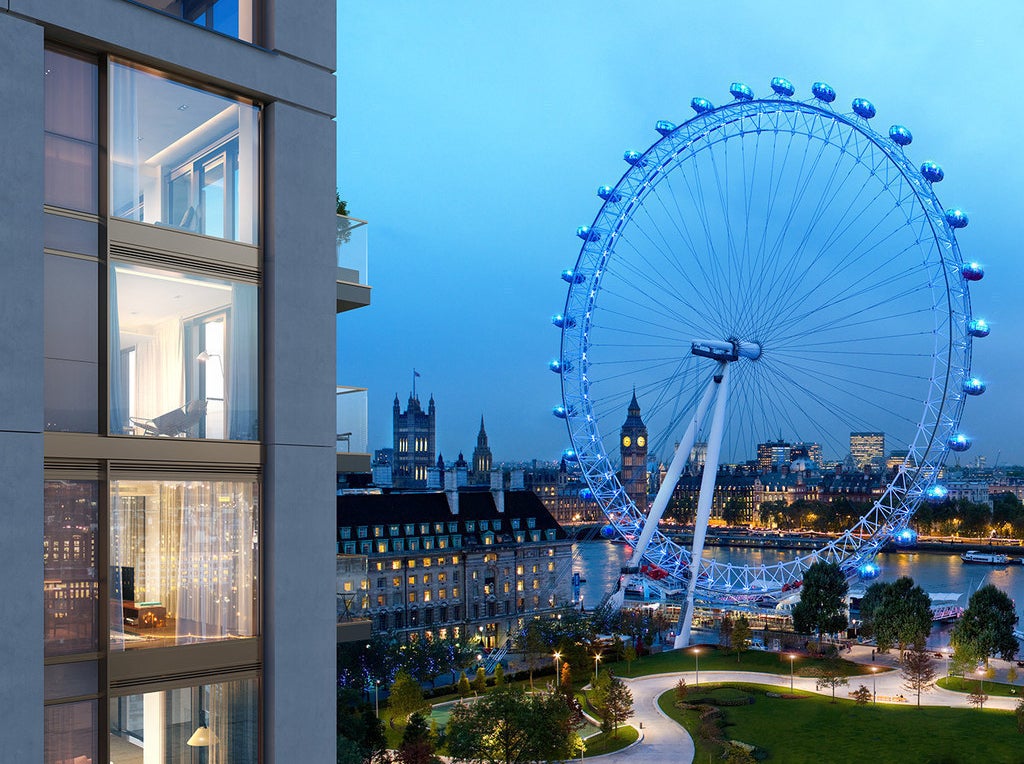
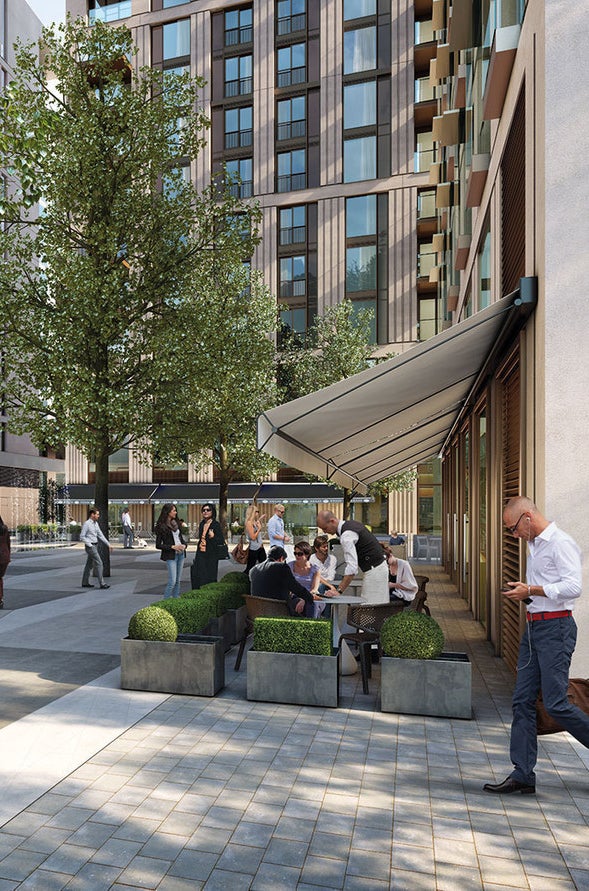
Affordable housing? Out of 868 on-site homes, 98 will be affordable, plus the developers will pay for a further 70 affordable homes to be built nearby at Lollard Street.
Overall that's 20% of the total, half the 40% target set by Lambeth council.
But the developers paid £10.3 million to the local authority's affordable housing fund.
And Lambeth council was impressed by the range of other perks, including: almost 11,000 square metres of open space surrounding the site; a £1.5 million training scheme with the Chartered Institute for IT; a £60,000 annual grant to the Jubilee Gardens, a public space next to the development, and a £117,000 payment to improve the local area, including an improved ticket hall at Waterloo station.
The decision over the development was "called in" by Eric Pickles, the former communities minister, who approved it on the basis that it "maximises affordable housing provision".
